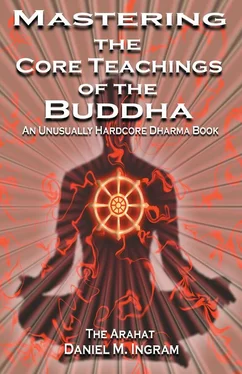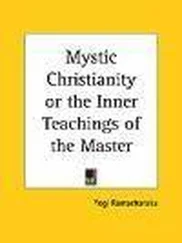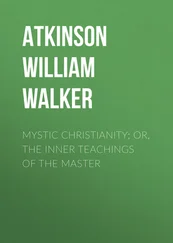Daniel Ingram - Mastering the Core Teachings of Buddha - An Unusually Hardcore Dharma Book
Здесь есть возможность читать онлайн «Daniel Ingram - Mastering the Core Teachings of Buddha - An Unusually Hardcore Dharma Book» весь текст электронной книги совершенно бесплатно (целиком полную версию без сокращений). В некоторых случаях можно слушать аудио, скачать через торрент в формате fb2 и присутствует краткое содержание. Год выпуска: 2009, ISBN: 2009, Издательство: Aeon Books, Жанр: Старинная литература, на русском языке. Описание произведения, (предисловие) а так же отзывы посетителей доступны на портале библиотеки ЛибКат.
- Название:Mastering the Core Teachings of Buddha - An Unusually Hardcore Dharma Book
- Автор:
- Издательство:Aeon Books
- Жанр:
- Год:2009
- ISBN:9781904658405
- Рейтинг книги:5 / 5. Голосов: 1
-
Избранное:Добавить в избранное
- Отзывы:
-
Ваша оценка:
- 100
- 1
- 2
- 3
- 4
- 5
Mastering the Core Teachings of Buddha - An Unusually Hardcore Dharma Book: краткое содержание, описание и аннотация
Предлагаем к чтению аннотацию, описание, краткое содержание или предисловие (зависит от того, что написал сам автор книги «Mastering the Core Teachings of Buddha - An Unusually Hardcore Dharma Book»). Если вы не нашли необходимую информацию о книге — напишите в комментариях, мы постараемся отыскать её.
Mastering the Core Teachings of Buddha - An Unusually Hardcore Dharma Book — читать онлайн бесплатно полную книгу (весь текст) целиком
Ниже представлен текст книги, разбитый по страницам. Система сохранения места последней прочитанной страницы, позволяет с удобством читать онлайн бесплатно книгу «Mastering the Core Teachings of Buddha - An Unusually Hardcore Dharma Book», без необходимости каждый раз заново искать на чём Вы остановились. Поставьте закладку, и сможете в любой момент перейти на страницу, на которой закончили чтение.
Интервал:
Закладка:
The Vipassana Jhanas
peaceful. Thus, to say that the Dark Night stages such as Disgust are part of the fourth jhana just rubs the wrong way somehow, as does saying that Three Characteristics (which also tends to suck a bit) is part of the enjoyable first jhana. The point is that no matter how you slice it, the correlations are not quite perfect, and insight practice is rarely as pleasant as good old concentration practices. That said, there is something to these models anyway, and if you master insight and concentration practices and know a bit of theory, you will see for yourself what they were trying to get at, so get to it!
INKLINGS OF ONE MORE MODEL
The last model is one that is hinted at by the a line in The Vi
suddhimagga when it says that Desire for Deliverance, Re-observation and Equanimity are one. This cryptic phrase may mean many things.
One of them is that the content of these three stages is likely to be largely the same, while the relationship to it may change dramatically. It could also be used as justification for a third model that put these three together in the fourth jhana. Further, as the fourth vipassana jhana is about equanimity concerning formations, one might presume that one would have had to perceive formations at an earlier stage, such as the previous two, in order to have had the necessary time and experience to come to equanimity concerning them.
Go see for yourself and consider which of these three models presented here fits with your actual experience, or throw this book and all of its models out the window and investigate the Three
Characteristics precisely regardless of what happens! Actually, such decisions might be better made after reading the next chapter…
228
Mastering the Core Teachings of the Buddha
26.HOW THE MAPS HELP
Now that I have presented the maps of the Progress of Insight, I will reiterate just a bit about how they help and why I went to all of that trouble. I will try to do this in chronological sequence and tie it in with what has been said in Part I.
The maps tell you clearly what you are looking for and explain exactly and precisely why you are looking for it, how that insight helps, and how that insight provides the ground for what follows. The same thing could be said of the concentration state maps. If the stages of insight didn’t tend to bring up all sorts of unusual raptures and produce such a wide range of potentially destabilizing emotional side effects, there would not be so much need for the maps. You could simply tell people to increase their perceptual abilities until they got enlightened, and they would likely have few difficulties in doing so by properly applying the techniques. However, the insight stages do tend to cause these sorts of effects, so the maps are very useful for keeping people on track in the face of them.
Remember long ago in the chapter called The Seven Factors of Enlightenment when I mentioned that the first factor was mindfulness and that this was really good for sorting out what is mind and what is body and when each is and isn't there? That is because the first insight you are looking for, the one that gets you in a position to see more deeply, is stage 1. Mind and Body. Get it? This stuff is not random or arbitrary. It is all clearly laid out in a way that helps and fits with reality.
Remember how I said in that chapter that one should try to
experience the intentions that precede actions and thoughts, as well as the mental impression or “consciousness” that follows all sensations?
That is the understanding in stage 2. Cause and Effect. Thus, mindfulness is the first factor of enlightenment because it leads directly to the first two classic insights into the truth of what is actually going on.
If you want insight into something, then looking into that aspect of things precisely is the best way to acquire that insight.
Once one has directly experienced these two insights, then the Three Characteristics begin to become obvious in stage 3. The Three Characteristics, which is exactly why the next factor of enlightenment is
How the Maps Help
called investigation of the truth, i.e. the Three Characteristics. Both the Seven Factors of Enlightenment and the insight maps tell you exactly what you are trying to understand and why. Their order is not arbitrary in the least.
You will not be able to understand the Three Characteristics directly without sorting out what is mind and what is body and the relationships between them. Without understanding the Three Characteristics, regardless of what you call them, you will not be able to go further and will not be able to get enlightened. The Buddha laid it all out step by step. While this may seem unromantic and perhaps even dry, it is also exceedingly practical and without a doubt the clearest presentation of exactly how to wake up that I have ever seen presented in any spiritual system, just so my biases are made perfectly clear. In short, these maps and techniques can be profoundly empowering.
Once the Three Characteristics begin to become clear, the mind naturally speeds up and becomes more powerful. This is because it finally begins to draw on its tremendous power to see things directly without processing them through thought. Anyone who has driven a car, played a video game or done just about anything else for that matter knows that you just have to do it, but if you tried to think about every little thing you were doing it would be impossible.
This increase in mental power due to non-conceptual and direct experience is related to the third factor of enlightenment, energy.
Energy may now even be blazing up and down one's spinal cord, the mind gets bright and alert, and soon energy is flowing naturally, as one begins to enter the early part of stage 4. The Arising and Passing Away.
Remember how this correlates with the second samatha jhana, where applied and sustained attention or effort are no longer needed? They just happen on their own to a large extent, and energy is naturally present. Thus, it all ties together.
The next factor of enlightenment is rapture, which comes to
predominate in the second vipassana jhana and the Arising and Passing Away just as it does in the second samatha jhana. Thus, all of the important advice about rapture given earlier applies to the insight maps in Part III. One is generally advised to avoid becoming a rapture or Kundalini-junkie in that stage, although I suppose if that is your primary 230
How the Maps Help
reason for meditating, it is certainly your right to do so. Just be wary of the inevitable crash.
During the mature Arising and Passing Away, as well as in
Dissolution, tranquility becomes important and more pronounced, but then becomes too strong in late Dissolution. Thus, it becomes important to build the sixth factor of enlightenment, concentration.
Finally, when the Dark Night really kicks in, as it will once one can again find one's objects and stay with them (Fear through Re-observation), then Equanimity in the face of all experience becomes vital for progress, as stated in Part I. Thus, Equanimity can arise and that Path can be attained.
As mentioned before, the maps fill in the seemingly huge, frustrating and nebulous gap from doing something like sitting on a cushion paying attention to the sensations of your breath and finally getting enlightened.
The maps also tell you exactly what the common errors of each stage are. They warn people about not getting stuck in 1. Mind and Body by solidifying it into a jhanic state, which it closely resembles.
They provide comfort and explanation when things might get jerky, unpleasant or even downright painful in the stage 3. Three
Characteristics. They admonish people not to get too fascinated with how much of a mighty meditator they might feel like in the stage of the 4. Arising and Passing Away, and to even examine the sensations that make up the seemingly wondrous and tantalizing corruptions of insight such as equanimity and rapture. They warn of the possibility of thinking that one is enlightened when going though that stage, as well as saying that it is normal for wild and sometimes explosive experiences to occur.
Читать дальшеИнтервал:
Закладка:
Похожие книги на «Mastering the Core Teachings of Buddha - An Unusually Hardcore Dharma Book»
Представляем Вашему вниманию похожие книги на «Mastering the Core Teachings of Buddha - An Unusually Hardcore Dharma Book» списком для выбора. Мы отобрали схожую по названию и смыслу литературу в надежде предоставить читателям больше вариантов отыскать новые, интересные, ещё непрочитанные произведения.
Обсуждение, отзывы о книге «Mastering the Core Teachings of Buddha - An Unusually Hardcore Dharma Book» и просто собственные мнения читателей. Оставьте ваши комментарии, напишите, что Вы думаете о произведении, его смысле или главных героях. Укажите что конкретно понравилось, а что нет, и почему Вы так считаете.












